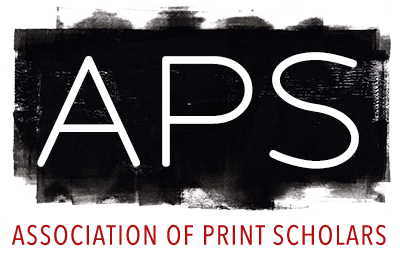CFP: Media of Exchange: Drawings and the Transmission of Ideas (Historians of Netherlandish Art Conference, Amsterdam/Den Haag, 2-5 Jun 2021)
Much attention has been given to the discussion of prints as mobile images that disseminated ideas across geographic, economic, religious, and linguistic borders. This emphasis on prints’ multiplication and spread overlooks the important contributions of drawings to cross-cultural and interdisciplinary exchanges. This panel investigates the vital role of drawings in the transmission of ideas, both within and beyond the early modern Low Countries, and their function as active agents to build networks, document encounters, and facilitate knowledge production. We seek to address questions that explore how and why drawings served as unique objects for the transmission of ideas in the early modern period: How did drawings act as points of contact between people, places, and objects? How were different media, for example, chalk, pen and ink, washes, or metalpoint, used for distinct purposes or merged to make new creations? Finally, in what capacities did drawings function differently from other media?
We invite papers that consider the unique material and technical qualities of drawings that positioned this medium as a vehicle for intellectual, educational, cultural, and professional transfer and contact. Sketchbooks, for instance, provided the ideal medium for travelling artists to capture ideas, copy down designs or document their surroundings. Meanwhile, travelling artists, merchants and diplomats alike would leave their pictorial marks in the alba amicorum of those they visited abroad. Drawings also enabled knowledge to move between disciplines. For instance, Samuel van Hoogstraten (1627-1678), in his art-theoretical treatise, advises his readers to make copies after his anatomical prints in order to quickly learn the shape and names of the muscles and bones, while medical practitioners made drawings when studying after a cadaver or documenting their patients’ maladies. Another fascinating example is how Rudolf II (1552-1612), in addition to collecting prints, commissioned albums of drawings from the artist Joris Hoefnagel (1542-1601), who incorporated natural specimens into his watercolour and gouache images. Finally, this session encourages speakers to consider how drawings provided a platform to express encounters and new ideas for non-professional draughtsmen. Think, for instance, of costume albums produced in the Ottoman Empire by Netherlandish travellers and merchants who were less technically experienced, such as Lambert Wijts (active 1572-1573).
Participants are invited to explore artistic exchanges across geopolitical, cultural and disciplinary divides. Contributions from other disciplines, such as the history of science, digital art history, and conservation are also welcome. We invite 20-minute papers that explore, but are not limited to, the following subjects:
- Material preferences
- Amateur vs. professional practice
- Ephemera
- Sketchbook/travelogues/letters
- Interdisciplinary exchange
- Cross-cultural contact
- Knowledge production and/or exchange
We ask that interested participants submit an abstract of no more than 250 words and a three-page CV to tschepers@getty.edu and erintravers@getty.edu by July 1st, 2020.
We invite papers that consider the unique material and technical qualities of drawings that positioned this medium as a vehicle for intellectual, educational, cultural, and professional transfer and contact. Sketchbooks, for instance, provided the ideal medium for travelling artists to capture ideas, copy down designs or document their surroundings. Meanwhile, travelling artists, merchants and diplomats alike would leave their pictorial marks in the alba amicorum of those they visited abroad. Drawings also enabled knowledge to move between disciplines. For instance, Samuel van Hoogstraten (1627-1678), in his art-theoretical treatise, advises his readers to make copies after his anatomical prints in order to quickly learn the shape and names of the muscles and bones, while medical practitioners made drawings when studying after a cadaver or documenting their patients’ maladies. Another fascinating example is how Rudolf II (1552-1612), in addition to collecting prints, commissioned albums of drawings from the artist Joris Hoefnagel (1542-1601), who incorporated natural specimens into his watercolour and gouache images. Finally, this session encourages speakers to consider how drawings provided a platform to express encounters and new ideas for non-professional draughtsmen. Think, for instance, of costume albums produced in the Ottoman Empire by Netherlandish travellers and merchants who were less technically experienced, such as Lambert Wijts (active 1572-1573).
Participants are invited to explore artistic exchanges across geopolitical, cultural and disciplinary divides. Contributions from other disciplines, such as the history of science, digital art history, and conservation are also welcome. We invite 20-minute papers that explore, but are not limited to, the following subjects:
- Material preferences
- Amateur vs. professional practice
- Ephemera
- Sketchbook/travelogues/letters
- Interdisciplinary exchange
- Cross-cultural contact
- Knowledge production and/or exchange
We ask that interested participants submit an abstract of no more than 250 words and a three-page CV to tschepers@getty.edu and erintravers@getty.edu by July 1st, 2020.
Relevant research areas: Western Europe
[ssba]

Leave a Reply
You must be logged in to post a comment.